Action shooting sports have sent traditional bullseye matches to the retirement home.
These days, shooting sports like USPSA, IPSC, and PCSL have taken over shooting clubs around the world.
The most dynamic and challenging of the action shooting sports is, without a doubt, 3-Gun.
But given the movement and use of multiple guns that are required, 3-Gun can be a bit intimidating to approach or even understand. But don’t worry, we’ve got you covered.
Today, we are going to lay out the basics of what 3-Gun is, the gear you need, a few basic pointers, and what to expect.
Table of Contents
Loading…
What Is 3-Gun?
3-Gun is an action shooting sport that entails shooting fast, moving, and hitting a variety of targets. Many stages require reloads, feature both close and long shots, and sometimes even the targets can be dynamic.
As the name implies, 3-gun requires you to shoot with three different guns: a handgun, rifle, and shotgun.
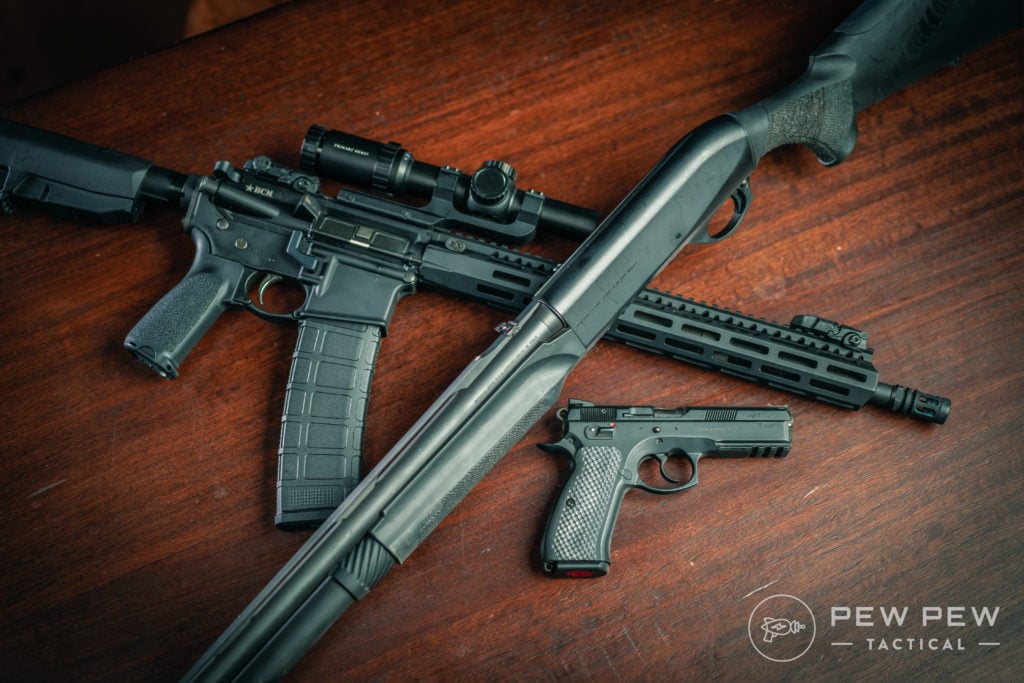
There isn’t a rule that necessarily requires you to have a particular firearm model. However, most people gravitate toward the same platforms because their performance aligns well with the requirements of the competition.
Rifles are typically AR platform guns in 5.56 NATO. Real rifle rounds are almost always required, but since 3-Gun is such a versatile sport, you might find matches that allow pistol caliber carbines in the rifle section.
Handguns tend to be modern semi-automatic guns in 9mm. Other options are fielded, but revolvers and 1911s tend to be rare amongst competitors.
Semi-automatic shotguns tend to dominate 3-Gun, but pump-action guns aren’t too uncommon. Shotguns are almost always chambered in 12 or 20-gauge.
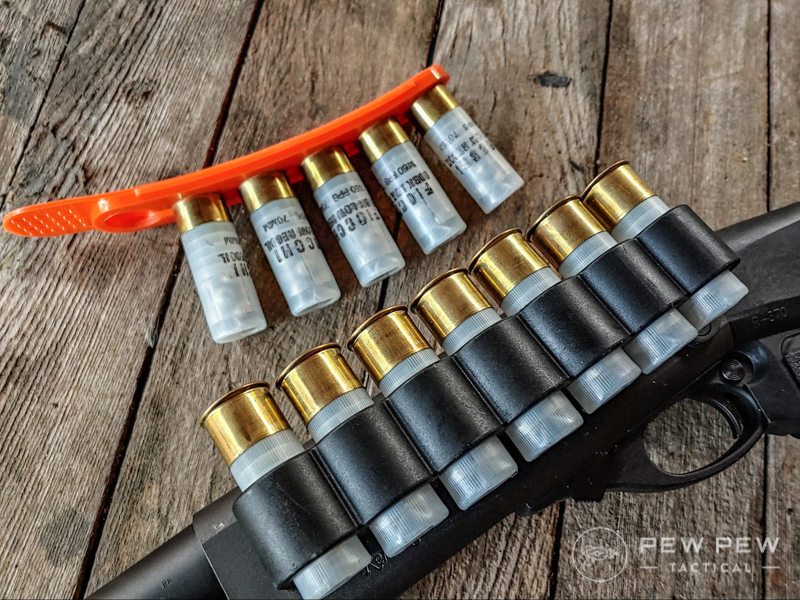
Don’t get too wrapped up in buying high-end competition guns if you’re a beginner. There are plenty of reasonably-priced guns that can get you competing at a reasonable level.
Equipment
In addition to your guns, you’ll need some equipment right off the bat before you can start competing.
We’ll cover what you need for each individual gun, as well as some basic universal gear.
General Gear
First, you’ll need a belt. Not a floppy canvas belt from American Eagle that just holds up your pants, you’ll want a shooting belt that’s stiff and capable of holding up a lot of gear. Competition-oriented belts are highly recommended here.
These will often be a combination of inner and outer belts, with the outer belt going through your belt loops and securing it to your body. There are a few different attachment methods for your gear, depending on the type of belt you go with.
Prices accurate at time of writing
Prices accurate at time of writing
-
25% off all OAKLEY products - OAKLEY25
Copied! Visit Merchant
Next, you’ll need proper protective equipment. For shooting, this means high-quality ear and eye protection. I suggest electronic hearing protection so you can hear range commands.
Prices accurate at time of writing
Prices accurate at time of writing
-
25% off all OAKLEY products - OAKLEY25
Copied! Visit Merchant
Finally, don’t forget chamber flags to indicate when your guns are unloaded. I went to my first match without a single chamber flag, and thankfully, some shooters had spares. Bring chamber flags for your rifle, shotgun, and handgun. You might not need all three, but it’s better to have more than less.
Rifle Gear
You can shoot with iron sights, but you probably want an optic. The division you choose to compete in (more on that later) will determine what kind of optic you might want to use. The same goes for bipods, which are allowed in some divisions but not in others.
While a sling is not always necessary to have and you’re not likely to use it, it can still be handy to have. Some matches may require one.
Prices accurate at time of writing
Prices accurate at time of writing
-
25% off all OAKLEY products - OAKLEY25
Copied! Visit Merchant
You’ll need at least two magazines, but I’d bring a few extras in case one malfunctions or fails. Quality mags that can take a beating, like Magpul PMAGs, are a wise investment.
Prices accurate at time of writing
Prices accurate at time of writing
-
25% off all OAKLEY products - OAKLEY25
Copied! Visit Merchant
Along with those magazines, you’ll need magazine pouches to carry your spares on your belt.
Handgun
When it comes to handguns, some divisions allow pistol optics, while others are iron-sights only. Which division you run in is up to you.
The main thing here is that you need a quality holster for your handgun. Specifically, a holster that covers the entire trigger.
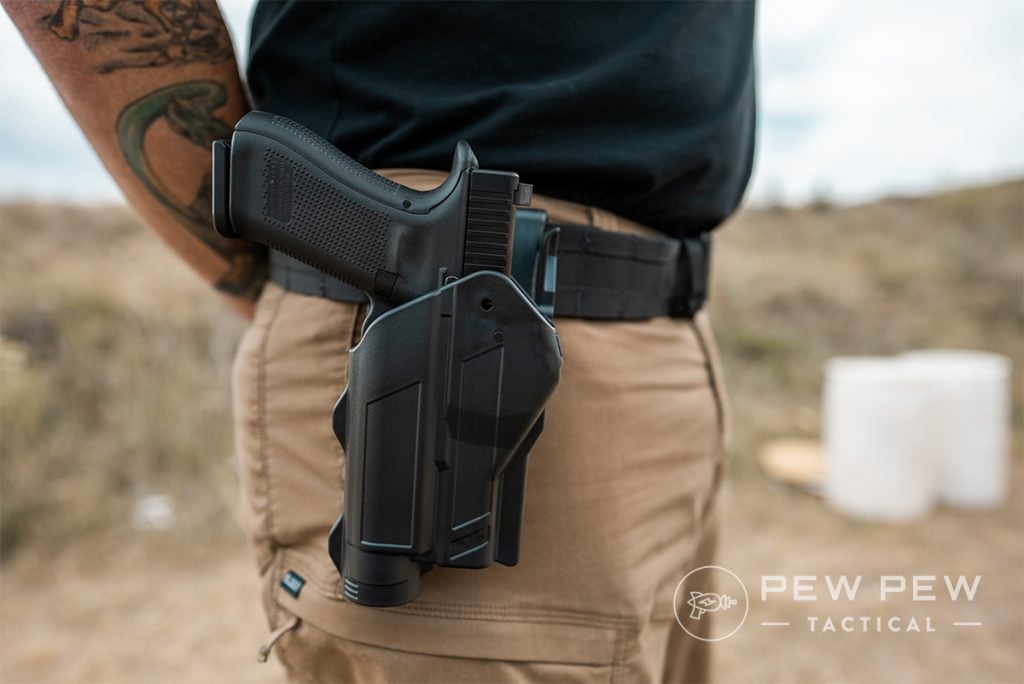
I’d advise either tight passive retention or an active retention device. Retention is king, because if your gun falls out of the holster, it is an instant disqualification.
Prices accurate at time of writing
Prices accurate at time of writing
-
25% off all OAKLEY products - OAKLEY25
Copied! Visit Merchant
You’ll likely need at least three handgun magazines, but like the rifles, bring spares in case one goes down. Remember, you need belt pouches to carry those spare magazines.
Shotgun
Just like handguns, optics on shotguns are allowed for certain divisions, but not for all.
Slings may or may not be required depending on the match.
The biggest part of using a shotgun during a 3-Gun match is carrying enough ammo that you can access quickly. There are tons of specially made 3-Gun shotshell caddies that can mount to your belt. They can hold ammo vertically or horizontally, with vertical mounts tending to be the current meta.
-
25% off all OAKLEY products - OAKLEY25
Copied! Visit Merchant
Ammo
Depending on the range, you may need to plan your ammo properly. Always pay special attention to any special requirements of both the range and the specific matches you plan to shoot.
Check to see if there are any banned ammunition types as well as any required ammunition types.
3-Gun Divisions
3-Gun is a big sport with many organizations having their own rule sets and divisions. It’s also a sport that constantly evolves.
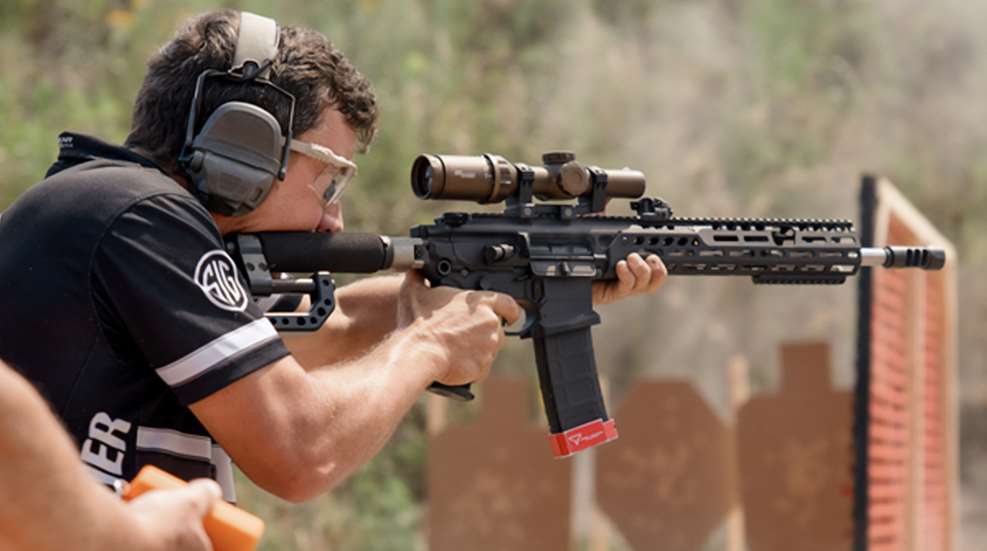
With that said, the division names and requirements may vary depending on what rule set and organization you shoot under.
These divisions are fairly well representative of the 3-Gun community, but confirm individual rules prior to heading to a match.
Limited
Limited is the easiest division to get started in. This division includes iron sights for handguns and shotguns, but a 1x optical sight can be used on rifles.
Shotguns can be either pump or semi-automatic.

Magazine capacity is often limited, and guns are supposed to be in stock configuration. It’s the most affordable way to get into the sport and be competitive.
Modified Optics
Modified Optics is one of the fastest-growing divisions in 3-Gun. It’s often just called Modified. This division allows optics for all firearms.
Handguns are allowed to use a single red dot. Rifles can use red dots or magnified optics as well as bipods. Shotguns can also be equipped with red dot sights.
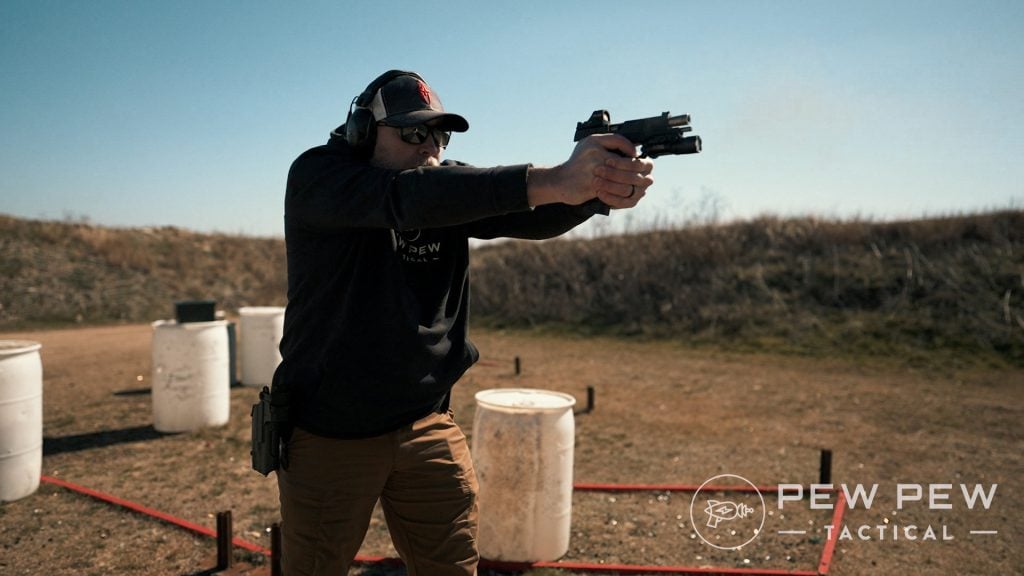
Other than the optics, the rules are usually similar to Limited in terms of modifications, magazine capacity, and accessories.
Tactical
Tactical division is likely to be eventually replaced by Modified Optics, but it’s still a traditional division.
This division allows shooters to use a magnified optic on their rifle. Other than that, it’s typically identical to Limited.
Open
As the name implies, everything goes in the Open Division. You’ll see magazine-fed shotguns, massive magazine tubes for shotguns, combination optic setups, drum magazines, and more.
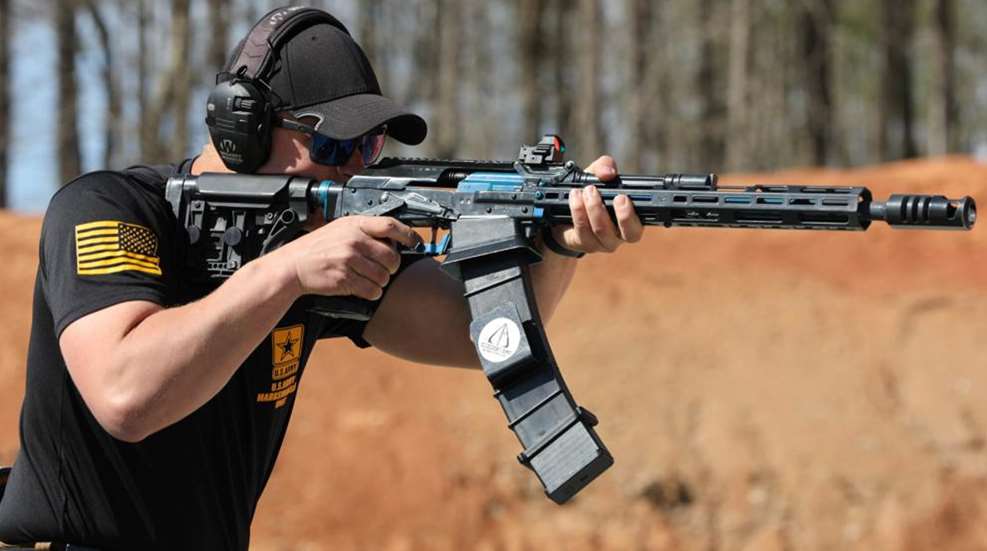
Pretty much anything is fair game here as long as it’s safe and legal.
Heavy Metal
Heavy metal is for the hardcore enthusiasts who crave recoil. This division uses full-powered rifle rounds like .308 Winchester and larger caliber handgun rounds like .45 ACP. Additionally, shotguns are limited to 12-gauge only.
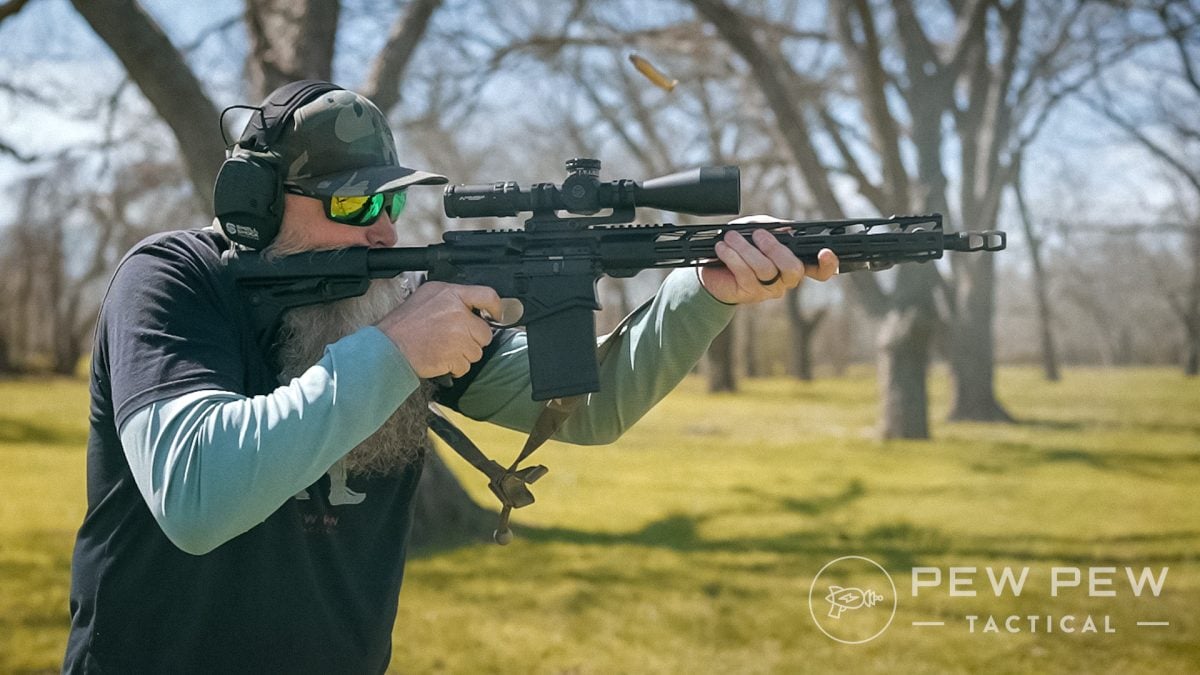
Match Safety
Safety is a big part of any action shooting sport. While there might be different 3-Gun organizations and rule sets, safety is always the number one priority.
Before any match, there will be a safety briefing. Here, the rules will be explained, the staff will be identified, and all elements of safety will be discussed.
Additionally, this is a great time to ask questions about safety aspects. Questions, especially about safety, are encouraged.
The four rules of firearms safety should be memorized before attending a match and followed the entire time. If you ever feel unsure about what you’re doing, alert an RSO or ask another competitor and ask questions.
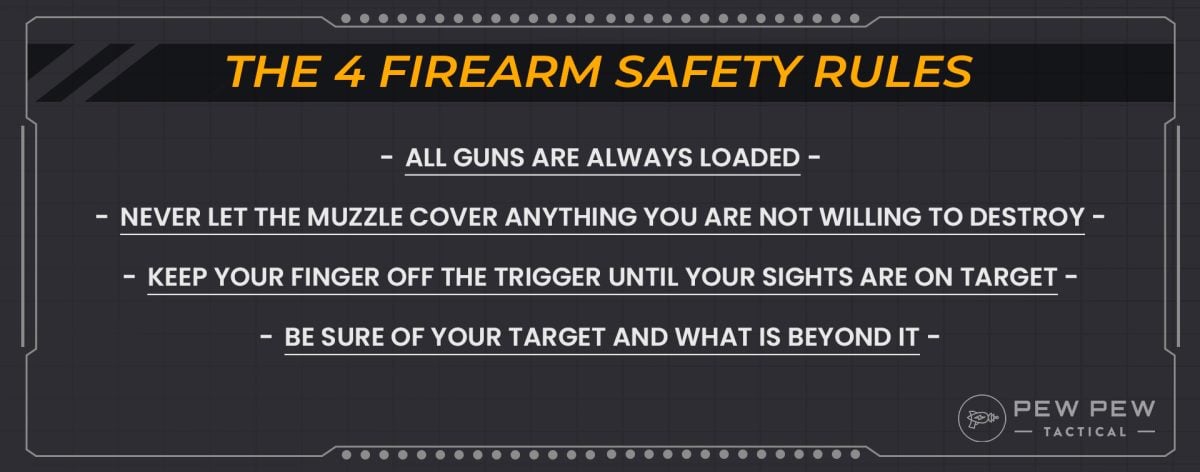
Keep in mind that everyone is responsible for general safety. If you see something unsafe, you can always call a ceasefire. Just because you are not an RSO doesn’t mean you can’t enforce safety rules.
Chamber safety flags are used to indicate the chamber is clear and the gun is not in battery. When you’re not shooting, your guns are left unloaded, and magazines should be stored on the belt.
When shooting 3-Gun, you are typically shooting on a 180-degree range. If you break the 180-degree plane, you are breaking the safety rules and will almost always be disqualified. The gun can never break the 180 unless it’s cleared and empty, and you are heading off range.
Remember, if you are unsure, ask!
Positions
You might hear a few terms at a match that might be unfamiliar. Many of these will be related to specific positions for the shooter and/or their gun.
Port Arms
Port arms applies to long guns. In a port arms position, your barrel is oriented up, and the stock is against your belt. The loading port or the magazine well is facing the ground.
Low Ready
Low ready will have you position the stock of your gun against your shoulder with the barrel pointed down toward the ground.
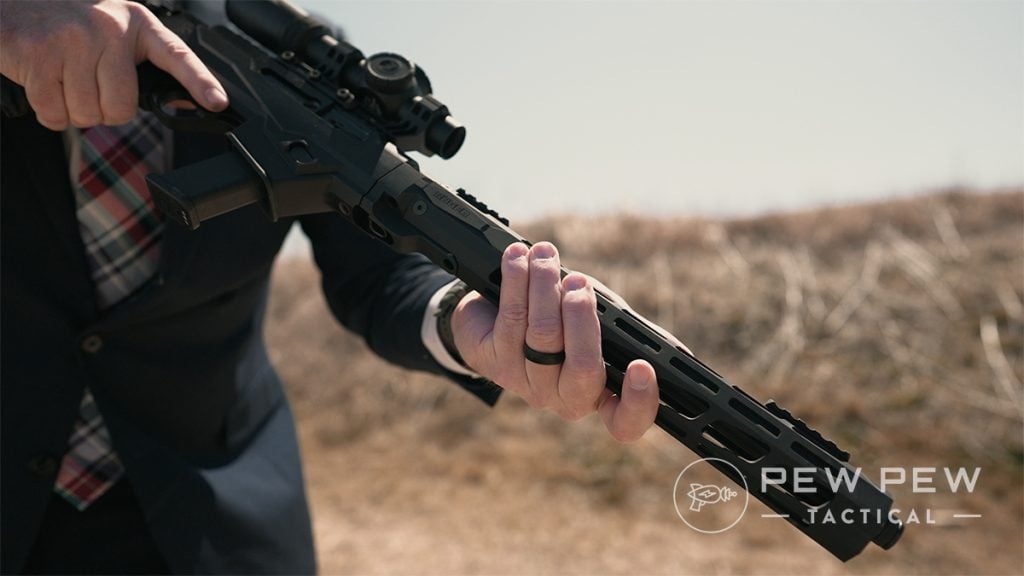
Prone
Prone is a shooting position where the shooter lies on their stomach, oriented towards the target.
Supported
Supported means you are resting the gun on a surface to fire it. This means you will be resting it on a bipod, the ground, or a barrier.
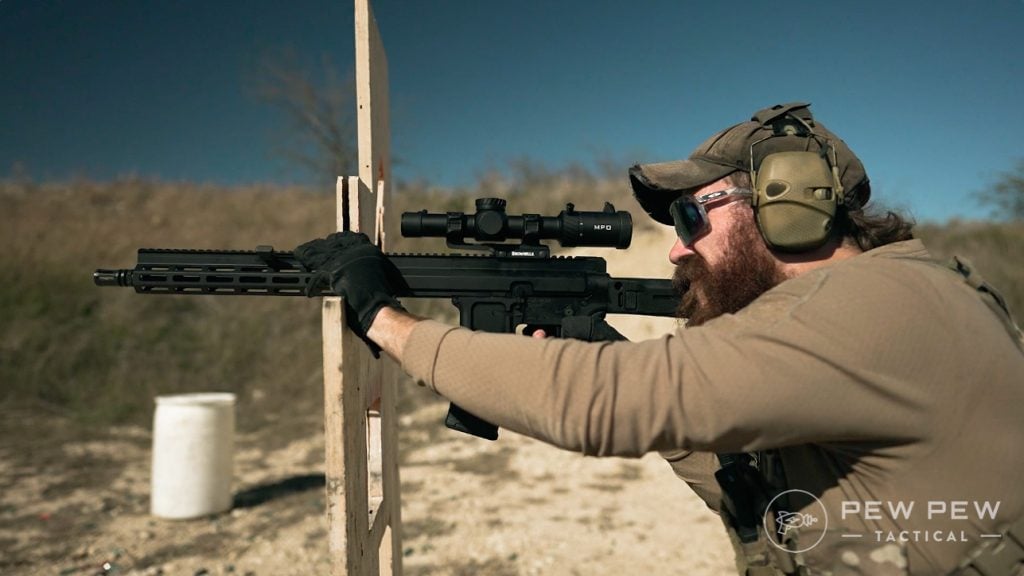
Support Side
Support side is your offhand side. This means if you’re right-handed, your support side is your left side.
Basic Scoring
Scoring a 3-Gun match is done by stage.
During each stage, a shot timer will record the time. Your time starts when the timer beeps and ends when the last shot is fired.
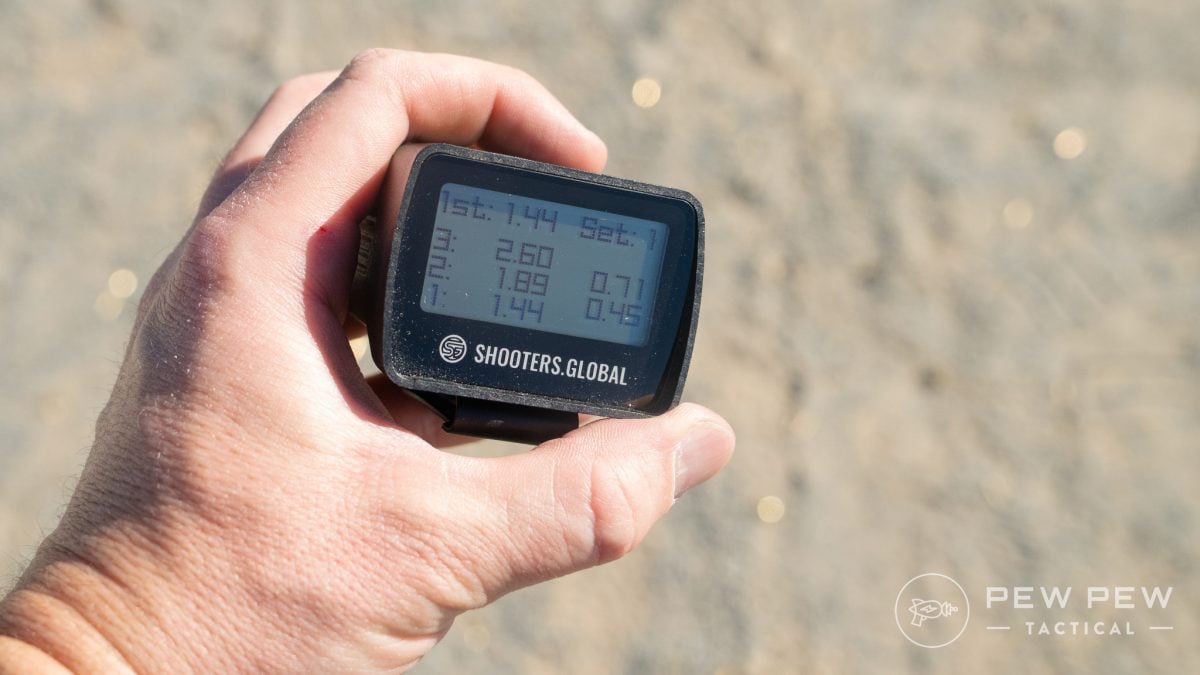
Time is added for missed shots, shots on no-go targets, footwork penalties, and other penalties.
Before Your First Match
Before you shoot your first match, you should make sure all of your firearms are zeroed, and you know how your shotgun patterns.
Ensure that your gear is secured firmly to your belt and easily accessible. Practice some dry reloads or use snap caps to help sharpen your fundamental skills.
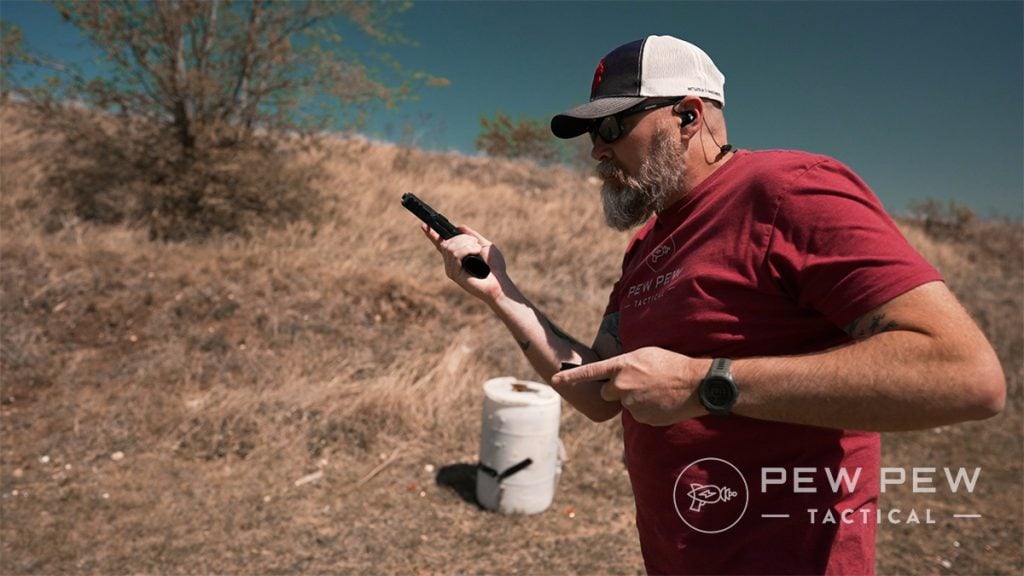
Some people are visual learners. Watching YouTube videos of 3-Gun matches can give a great look at what your average stage will look like.
It is even better if you attend a local match or two as a spectator, so you can see exactly how things are done before deciding to compete.
What To Expect At Your First Match
The first thing you’ll do is check in and pay any potential range or match fees if you haven’t already paid online.
Next, you will attend the safety brief that I mentioned earlier.
After the safety brief, the RSOs or match director will go over the basic rules of how each match will be run.
Shortly after that, you’ll be put into a squad, and that squad is who you’ll shoot with. If you have four stages, you’ll shoot those four stages with your squad. Squadmates can be great people to ask questions about the match itself or the sport as a whole.

When you shoot the match, you’ll be moving and shooting. You’ll be engaging a variety of targets. Rules may vary, but you’ll likely need to engage cardboard targets with two rounds each, and bullseye targets with one round to the center.
Any clay targets will have to be destroyed, and steel targets knocked over to be counted as hits.
Each stage will have to be reset after it is shot. This entails pasting stickies on cardboard targets to cover up holes, resetting the steel targets, and more.
You’ll typically be shooting anywhere from four to nine stages, which can vary in intensity. Be sure to bring water or Gatorade to stay hydrated during the entirety of your match.

Meet the Experts
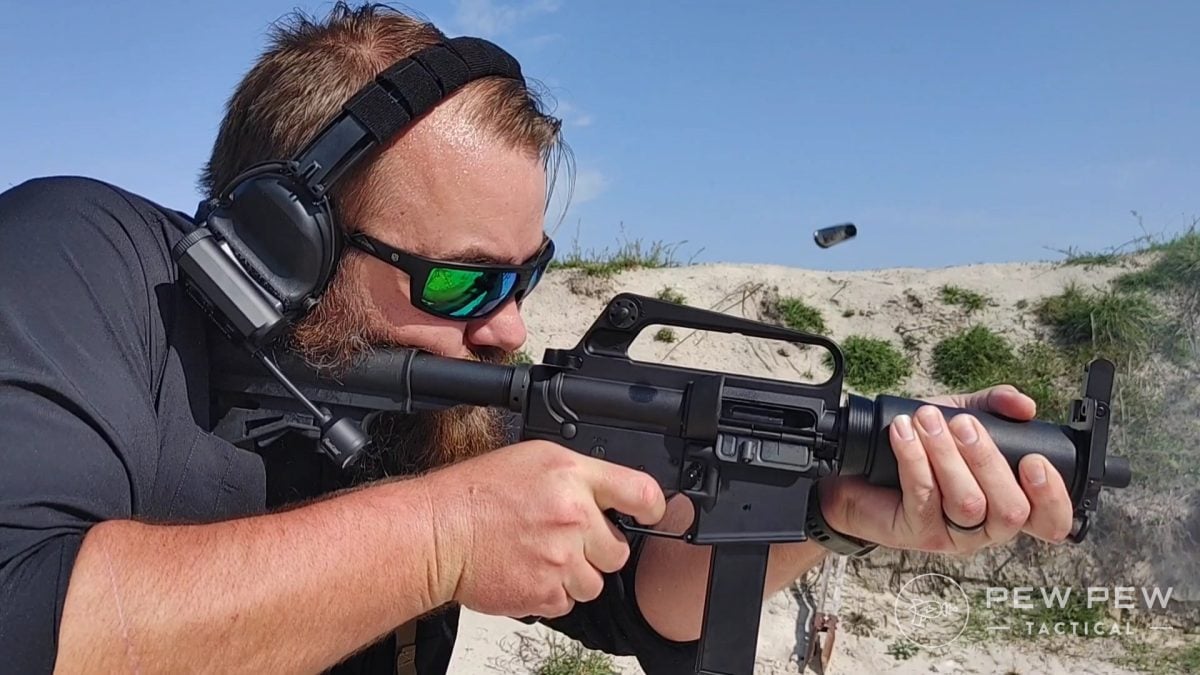
Pew Pew Tactical author Travis Pike wrote this article. Travis spent a lifetime shooting as a kid and later joined the United States Marine Corps, where he spent five years as an infantryman. His experience as a machinegunner, recreational and competitive shooter, and hunter has given him unique insight into various weapon platforms. Additionally, Travis has thousands of articles to his name with a variety of publications, and has tested countless guns and other firearm accessories.
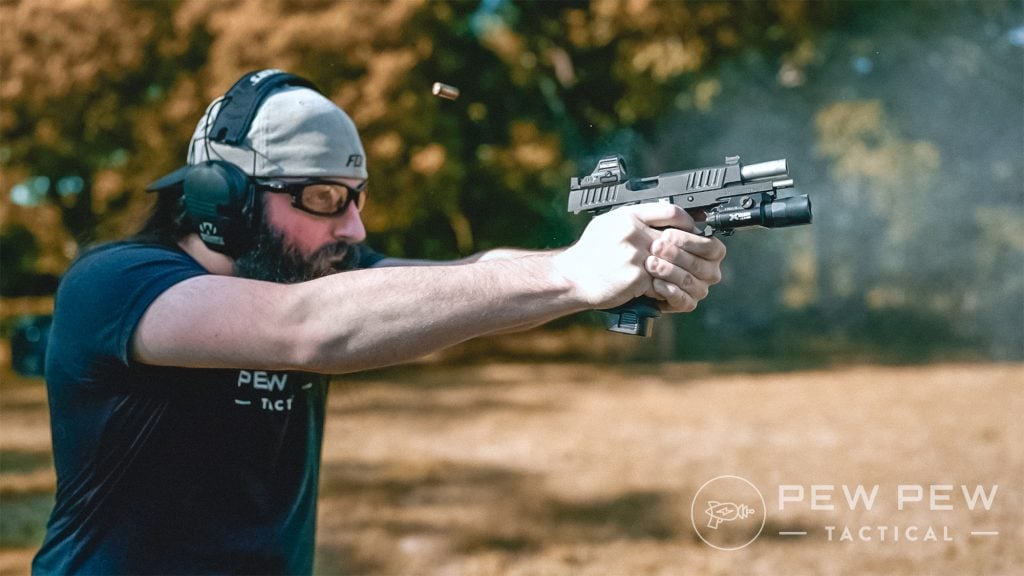
Editing and adding to this article is Pew Pew Tactical Editor, Wyatt Sloan. Wyatt is an NRA-certified instructor and also has experience with competition shooting and hunting. Wyatt personally owns over 200 firearms and has 10 years of home-based FFL firearm sales.
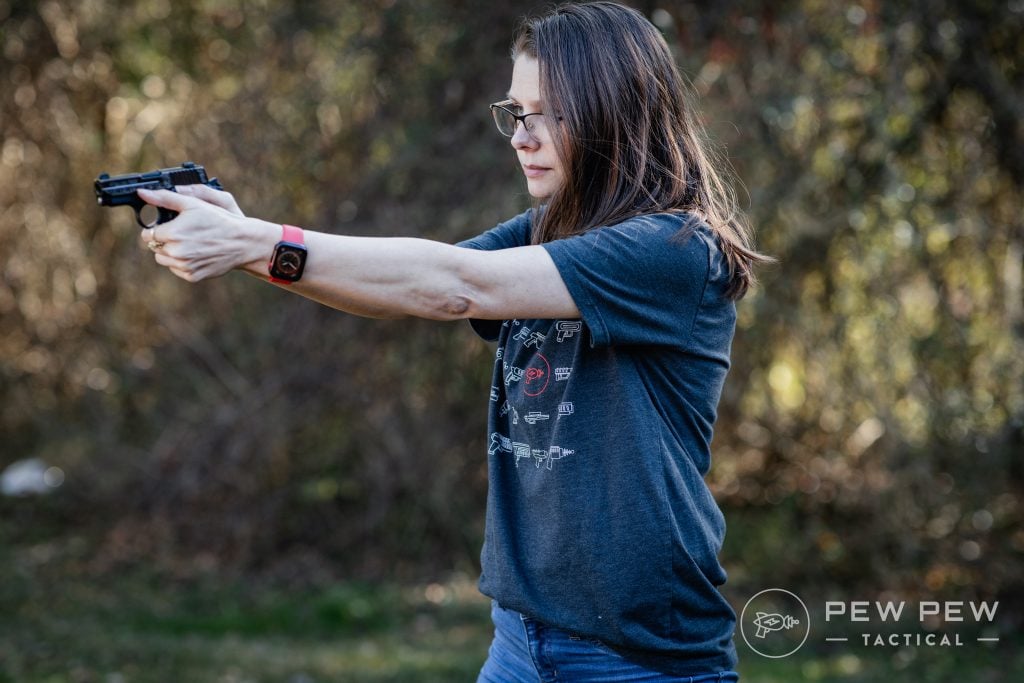
Editor-in-Chief Jacki Billings runs our experienced team of reviewers. She is a National Rifle Association Basic Pistol Instructor as well as a member of the Society of Professional Journalists, ACES: Society for Editing, and the Professional Outdoor Media Association. Jacki has a bachelor’s degree in journalism and has worked as a media professional for close to 20 years, specializing in gun media for almost 10 years. With 2,000+ articles to her name, she uses her professional journalism and editing experience to set testing protocols and editorial standards for Pew Pew Tactical.
Final Thoughts
This all may sound like a lot to take in, but remember, 3-Gun is meant to be fun. Go out and watch a match or two, and you will see the enjoyment and fun factor on full display.
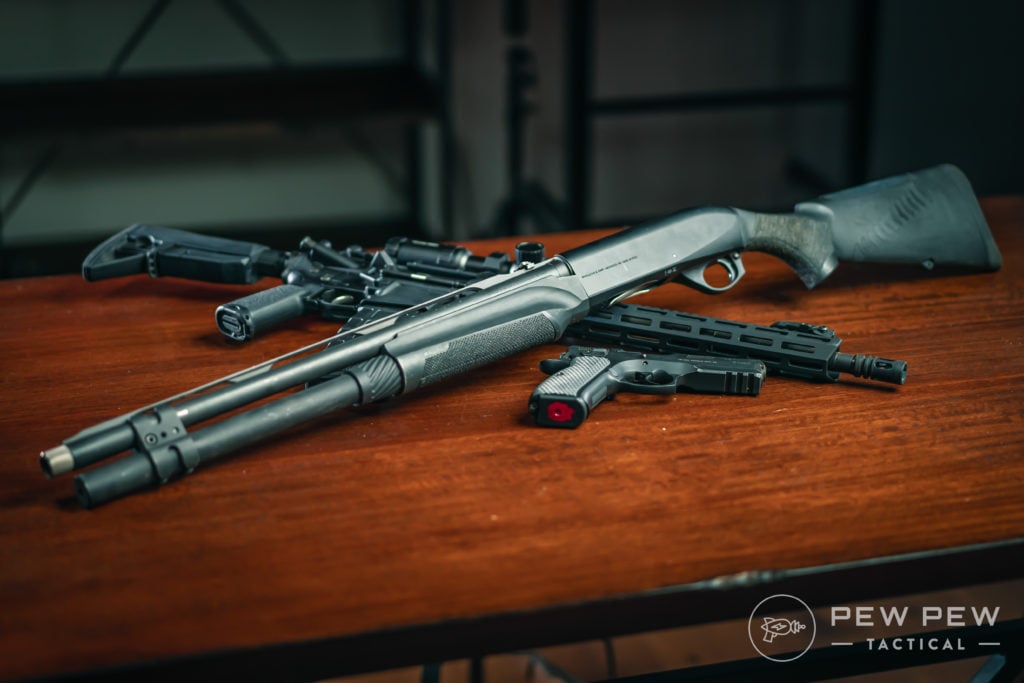
Once you get settled in, you will likely find a welcoming community that encourages each other to improve as shooters. And nothing is better than having fun and honing your skills at the same time!
Looking for more info on what guns to run? Check our articles on the Best Competition Pistols, Best AR-15s for 3-Gun, and Best 3-Gun Shotguns!

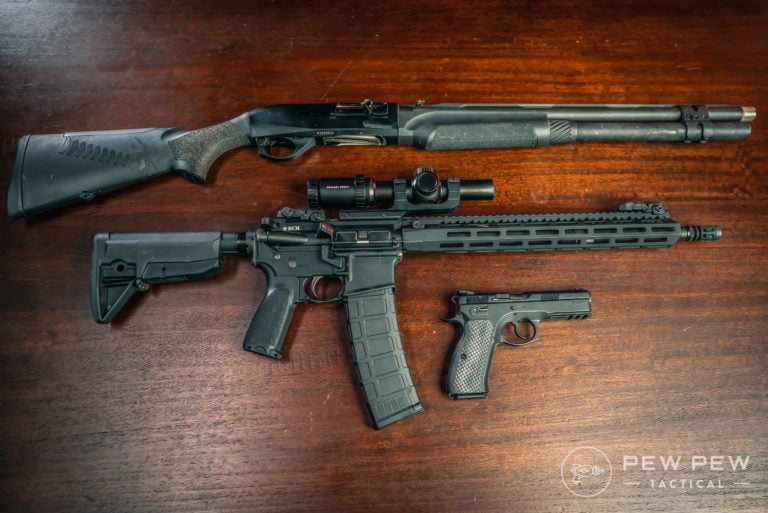
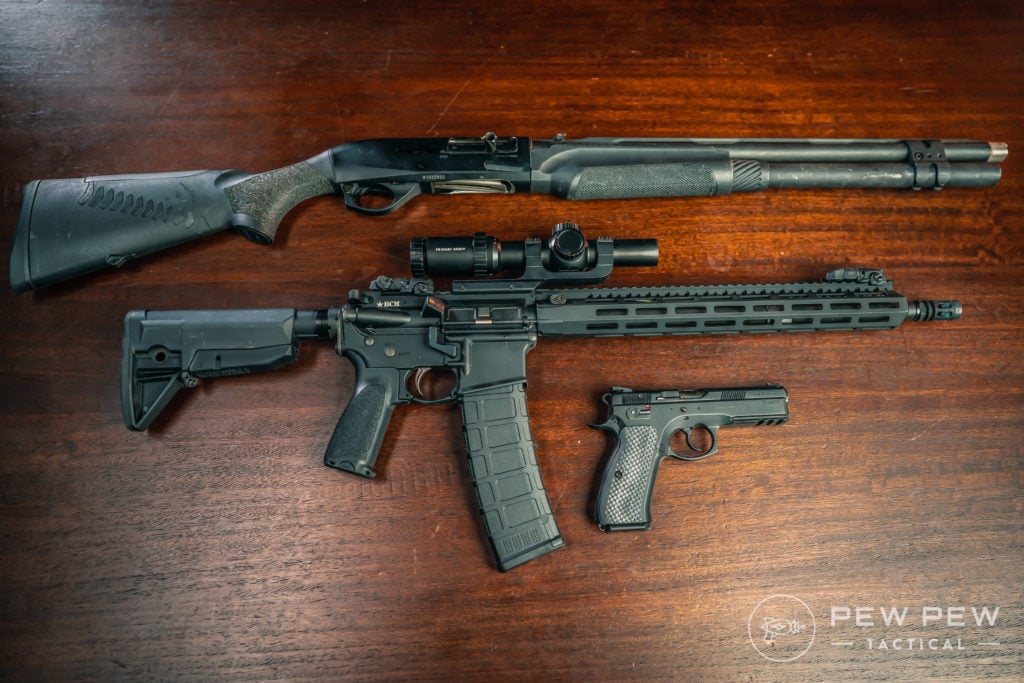





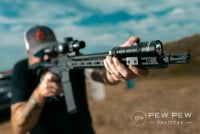
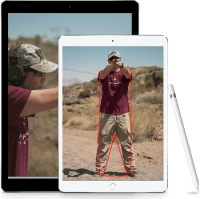


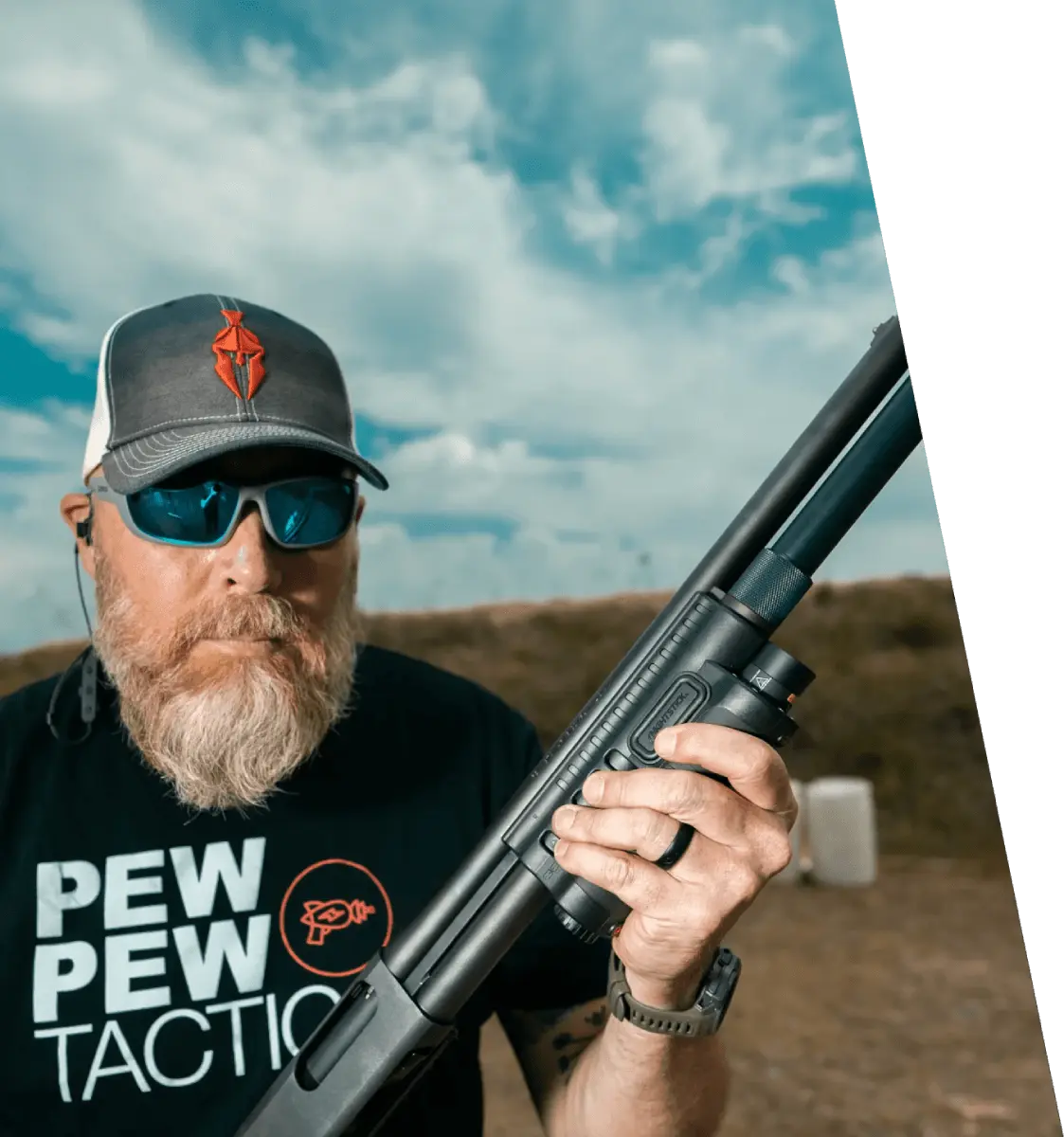

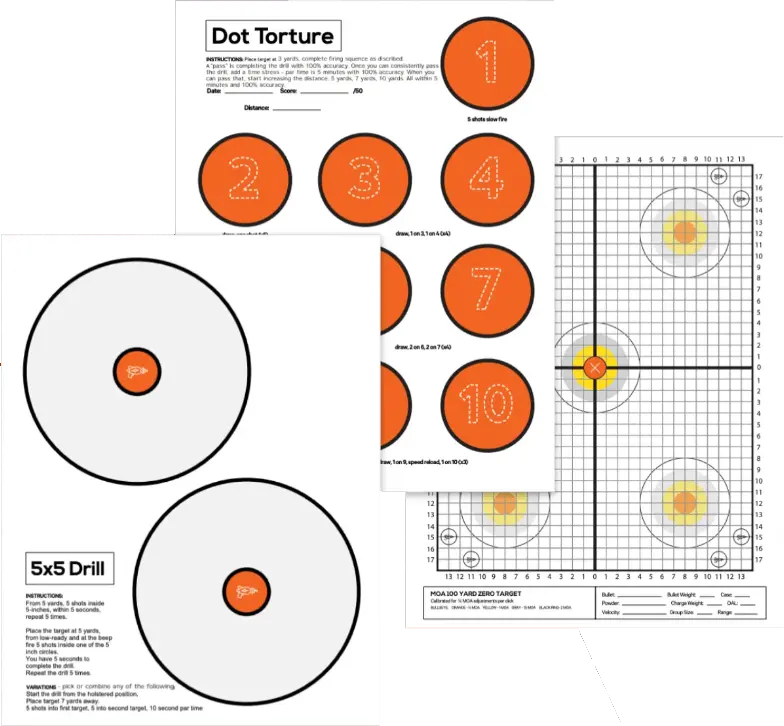
Leave a Reply